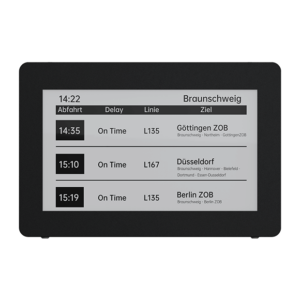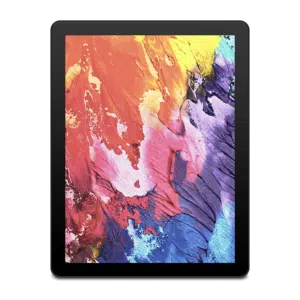Comparing Electronic Paper Displays with OLED and LED
Comparing Electronic Paper Displays with OLED and LED
Blog Article
Display technology is becoming an important element of our daily lives, showing in everything from smartphones and e-readers to large-scale advertising panels. One of the diverse array of large E ink display, OLED (Organic Light-Emitting Diodes), and LED (Light-Emitting Diodes) have emerged as some of the most generally mentioned options. While each kind serves a unique distinctive purpose, their differences in functions, effectiveness, and use instances make sure they are suitable for certain applications. Let's have a sooner consider the key features of the display technologies.
Electronic Paper displays (ePaper)
Electronic Paper displays, also known as ePaper or Electronic Ink displays, are created to imitate the appearance and readability of old-fashioned Ink on paper. That technology employs little microcapsules containing priced dark and white particles stopped in a clear fluid. When an electric subject is used, the particles proceed to each side of the capsule, producing an obvious image. The picture stays fixed until another electrical subject is applied, which makes it suitable for presenting text-based material such as for example books, papers, and e-readers.

Among the principal advantages of ePaper displays is their reduced power consumption. Unlike old-fashioned LCD
Knowledge Electronic Paper displays
An electric Paper display (ePaper) mimics the look of Ink on paper. Unlike standard monitors, ePaper depends on their capability to reveal surrounding mild rather than emitting its own. That engineering not only diminishes vision stress but additionally gives unparalleled readability in sunlight, making it well suited for e-readers and digital signage solutions.
One standout feature of ePaper displays is their extremely minimal energy consumption. Since they just use power when changing material, ePaper displays are very effective and suited to battery-powered devices. However, their refresh prices are slower compared to OLED and LED displays, limiting their applicability to fixed or minimally powerful content.
OLED displays
OLED displays are noted for their spectacular visual quality, offering vivid shades, serious blacks, and outstanding contrast. Each pixel within an OLED display emits its own light, eliminating the requirement for a backlight. That not merely allows for finer, more light designs but also results in better power performance in comparison to LED in certain scenarios.
One critical advantage of OLED displays is their flexibility. They could be manufactured in circular or collapsible styles, creating them popular in cutting-edge smartphones and wearable devices. But, OLED displays have issues, such as for instance susceptibility to burn-in and faster lifespans compared to different technologies.
LED displays
LED displays, the most common of the three, depend on a backlit process to light their pixels. Without as creatively impressive as OLED 13.3" epaper display, LEDs are very sturdy, long-lasting, and cost-effective. These features cause them to become suited to a broader selection of purposes, including TVs, computer monitors, and outside advertising.
LED displays on average accomplish properly in terms of perfection, creating them a great choice for situations with high normal light. But, they flunk in achieving exactly the same deep comparison and color precision as OLED technology.

Final Contrast
When choosing between ePaper, OLED, and LED displays, the decision depends mainly on the intended purpose. For static material like reading or signage, ePaper excels with its minimal energy use and large exposure in natural light. OLED shines in purposes wherever vivid shades and mobility are paramount. Meanwhile, LED stays a trusted and cost-efficient option for a variety of general-purpose needs.
Each display technology provides anything special to the table, ensuring that there is a perfect choice for every situation. Understanding these differences can help customers and corporations make educated conclusions that suit their particular display requirements. Report this page